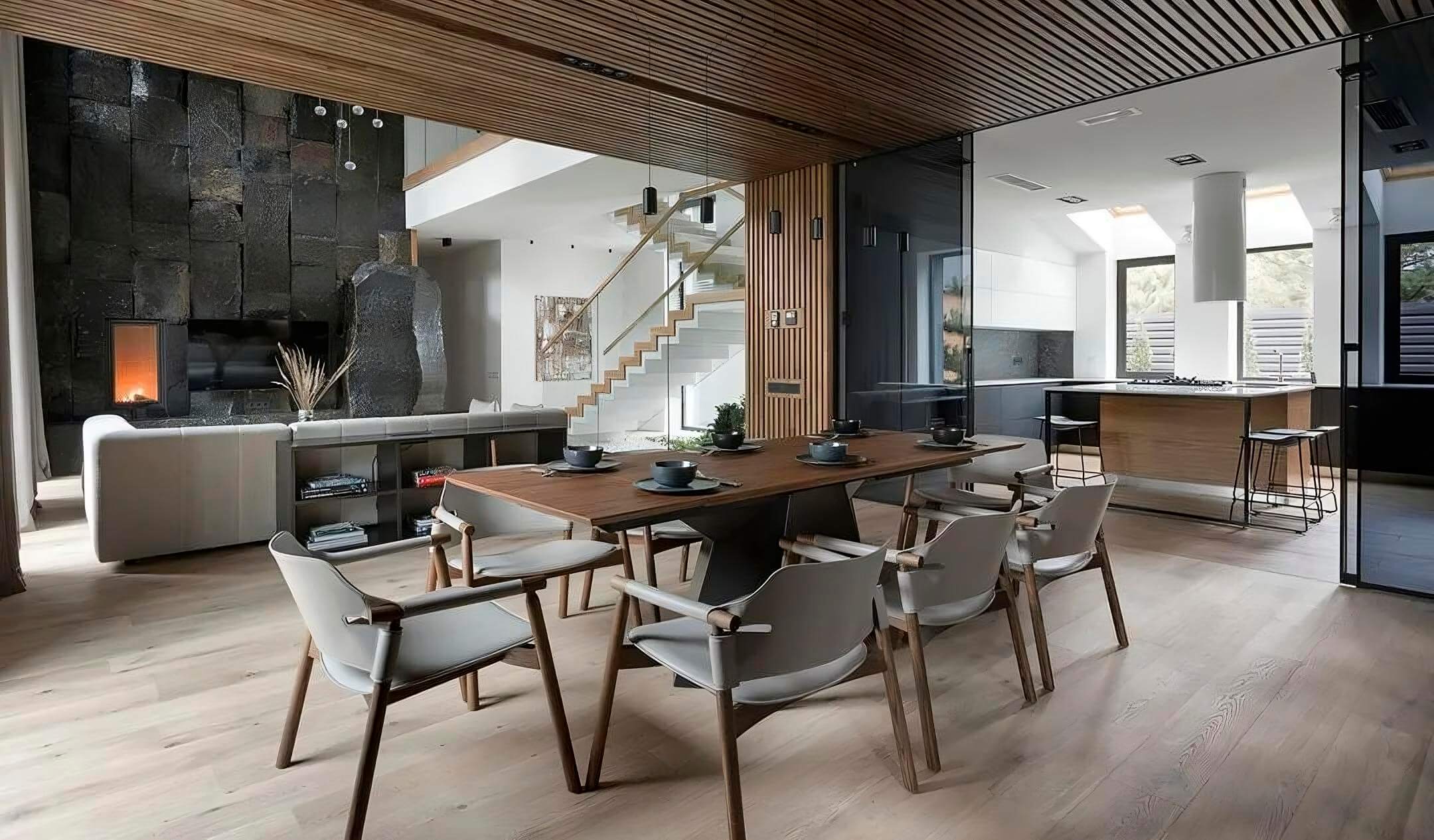What is LVP Flooring? A Comprehensive Guide
When it comes to durable, stylish, and affordable flooring options, LVP flooring (Luxury Vinyl Plank) is becoming a top choice for homeowners and businesses alike. Then, in this article, we will take a close look at what LVP flooring is, the key benefits of it, the installation process, and what makes it so unique against other options for flooring.
- What is LVP Flooring?
- Benefits of Choosing LVP Flooring
- Installation Process: How to Lay LVP Flooring
- Comparing LVP Flooring to Other Flooring Options
- In Conclusion: Why Choose LVP Flooring?
What is LVP Flooring
LVP, or Luxury Vinyl Plank, is a vinyl flooring option made to emulate the look and texture of natural hardwood but with better durability and resistance to water. Unlike the more general vinyl floorings, LVP has a thicker layer on top-the wear layer-so it is much stronger against abrasions and scratches, and in some cases, it’s even resistant to water.
Key Components of LVP Flooring:
(1) Wear Layer: The topmost layer that protects against scratches, stains, and wear.
(2) Design Layer: A printed layer that gives LVP its realistic wood or stone appearance.
(3) Core Layer: A sturdy, high-density core that provides structure and durability.
(4) Backing Layer: Provides sound insulation and additional support.
In other words, it is possible to get the LVP flooring in a bunch of fashions, colors, and textures. It is pretty easy to find the look that will evoke a perfect match for your design vision and style, both aesthetically and functionally.
Benefits of Choosing LVP Flooring
LVP flooring has a lot of positive aspects that make it highly favorable for residential and commercial spaces alike:
(1) Durability
For strength, it is excellent, all due to the multi-layer construction that LVP flooring is built with. The heavy foot traffic it can go through is just great because it is ideal for areas of a home that are used much and frequently, like the living room, kitchen, and hallways. Also it resists scratches and dents, hence being perfect for homes that have pets or kids.
(2) Water Resistance
One of the most significant advantages of LVP over traditional hardwood is its water resistance. And it is an excellent option for moisture-prone areas such as kitchens, bathrooms, and basements. Some LVP products are even 100% waterproof, offering peace of mind in areas where spills or humidity are common.
(3) Affordability
Compared to real hardwood or tile, LVP flooring is much more cost-effective while still offering a premium look. Also it is an excellent choice for budget-conscious consumers who don’t want to compromise on aesthetics or performance.
(4) Easy Maintenance
Maintaining LVP flooring is simple and straightforward. It doesn’t require sanding, polishing, or refinishing like hardwood floors. Regular sweeping and occasional mopping with a damp cloth will keep the floor looking brand new.
(5) Comfort and Noise Reduction
LVP flooring offers a softer feel underfoot compared to ceramic tiles or hardwood floors.Also it is quieter, which can help reduce noise in busy households or commercial spaces.
(6) Wide Range of Styles
Thanks to advancements in printing technology, LVP flooring can mimic the appearance of various wood species, from oak to maple, as well as stone and tile. Whether you want a rustic farmhouse look or sleek modern design, LVP has an option for you.
Installation Process: How to Lay LVP Flooring
One of the reasons why LVP is so popular is that it’s relatively easy to install. Many homeowners choose to take on the project themselves, although professional installation is also available. LVP is available in two main installation formats: click-lock and glue-down.
Click-Lock Installation
These planks are designed to be snapped together without the use of glue or nails in this methodology. This is a floating floor system, which means that the planks are laid over the subfloor and not attached directly to it. This methodology is quite suitable for DIY enthusiasts since it doesn’t call for any special tools or adhesives.
Steps for Click-Lock Installation:
(1) Prepare the Subfloor: Make sure the surface is clean, dry, and level. Remove any existing flooring if necessary.
(2) Acclimate the Flooring: Allow the LVP planks to acclimate to the room’s temperature and humidity for at least 48 hours.
(3) Lay the Planks: Start from the corner of the room, placing spacers along the walls for expansion gaps. Click the planks together, ensuring a snug fit.
(4) Cut as Needed: Use a utility knife to cut the planks to fit around corners or edges.
(5) Install Molding: Once the floor is complete, add baseboards or molding to cover the expansion gaps.
(2) Glue-Down Installation
This method has the LVP planks glued directly to the subfloor. It can be more secure and permanent, hence suitable for high-traffic or commercial space.
Steps for Glue-Down Installation:
(1) Prepare the Subfloor: Like the click-lock method, the subfloor must be clean, dry, and level.
(2) Spread the Adhesive: Use a trowel to spread the adhesive evenly over a small section of the subfloor.
(3) Lay the Planks: Press each plank firmly into the adhesive, starting from the center of the room.
(4) Roll the Floor: After laying the planks, use a roller to ensure the flooring adheres evenly to the adhesive.
(5) Allow Time to Set: Avoid walking on the floor for at least 24 hours to allow the adhesive to set properly.
Comparing LVP Flooring to Other Flooring Options
While all these great benefits surely come with the application of LVP flooring, for your good, you may compare it with other popular options available, which would make sure it’s right for your space.
| Comparison | LVP vs. Hardwood | LVP vs. Laminate | LVP vs. Tile |
| Cost | LVP is significantly more affordable than real hardwood | Both are affordable, but LVP offers better value | Tile can be more expensive due to material and labor costs |
| Water Resistance | LVP is waterproof; hardwood can warp or swell when exposed to moisture | LVP is more water-resistant than laminate | LVP is waterproof, while most tiles are water-resistant but not all are waterproof |
| Durability | LVP is more durable than hardwood, especially in moisture-prone areas | LVP is more durable and water-resistant than laminate | LVP and tile are both highly durable, but tile may crack under heavy impact |
| Appearance | LVP mimics real wood but doesn’t have the natural aging and grain variation of hardwood | LVP offers more realistic textures and finishes compared to laminate | LVP mimics both wood and stone, while tile offers a wider range of natural stone looks |
| Maintenance | Hardwood requires refinishing and regular care; LVP is low-maintenance | Both LVP and laminate are low-maintenance, but LVP is easier to clean | LVP requires less maintenance than tile, which has grout lines that may need regular cleaning |
| Comfort | LVP is softer underfoot and warmer than hardwood | LVP is softer and warmer underfoot than laminate | LVP is softer and warmer underfoot than tile |
| Installation | LVP is easier to install with click-lock systems, whereas hardwood requires professional installation | LVP is easier to install with click-lock systems, whereas laminate also uses similar installation methods | LVP is easier to install, especially in click-lock form, while tile requires grout and professional installation |
In Conclusion: Why Choose LVP Flooring?
LVP flooing is a very good combination of stylishness, durability, and affordability. Also it is water-resistant, with a variety of designs and very easy to maintain; hence, it is favored for homes and commercial establishments. Be it renovations in your house or furnishing an office that sees lots of traffic, LVP gives durable performance with the exact look of wood or stone.








